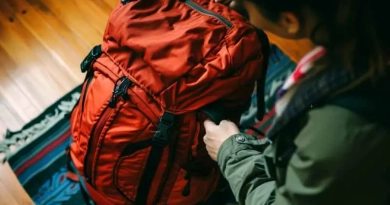
What is the Best Way to Train for Climbing?
There I was, a silhouette against the vast expanse of an unforgiving cliff face, pondering a question that haunts every climber’s mind at some point: “What is the best way to train for climbing?” It’s a question as vast as the landscapes we aspire to conquer, encompassing the intricacies of physical endurance, technical prowess, and mental resilience.
Training for climbing is no straightforward task; it’s a multifaceted endeavor challenged by individual limitations and environmental variables. The obstacles are manifold: physical fitness, technique, mental strength, and access to proper training facilities can all pose significant barriers. Moreover, the diversity of climbing—from bouldering to big wall climbing—requires diverse training approaches. This complexity means that one-size-fits-all solutions are rare, and personalization is key.
The Optimal Training Strategy
1. Structured Physical Training
Effective climbing training demands a focused approach to developing specific muscle groups and capabilities essential for climbing:
- Finger Strength: Utilizing hangboards is crucial as these tools help climbers build grip strength and endurance, allowing for better holds on smaller and more challenging grips.
- Core Stability: A strong core is vital for climbing as it helps maintain body positions and balance throughout a climb. Exercises like planks, Russian twists, and leg raises target these core muscles effectively.
- Overall Endurance: To sustain long climbing sessions, overall endurance needs to be developed through cardiovascular exercises such as running or cycling, and through climbing-specific endurance drills like 4x4s (four boulder problems, four times each, with minimal rest).
- Periodization: This training principle involves structuring the training schedule in cycles of varying intensity to maximize gains and prevent plateaus. This might include phases focused on building strength, power, endurance, and then tapering down for recovery.
2. Technical Skills Development
Technical skills in climbing encompass a broad range of practices, essential for efficient and safe climbing:
- Footwork: Practicing precise foot placements is critical. Drills like “silent feet” help climbers focus on placing their feet quietly and accurately, which enhances stability and minimizes energy waste.
- Body Positioning: Understanding how to position and move your body efficiently on the wall reduces fatigue. Techniques such as flagging, drop knees, or twisting instead of pulling can save energy and improve fluidity.
- Efficient Movement: Straight-arm climbing, where the climber keeps their arms straight and uses their legs to push upwards, conserves energy and increases reach.
3. Mental Conditioning
The mental aspect of climbing training can be as demanding as the physical challenges:
- Visualization: This involves mentally rehearsing a climb before physically attempting it. This practice helps familiarize the climber with the route and can reduce anxiety.
- Mindfulness and Stress Management: Techniques such as controlled breathing and meditation help manage fear and anxiety on the wall, enabling climbers to stay calm, focused, and make better decisions during climbs.
4. Practical Application
Practical application of climbing skills through regular practice is key to improvement:
- Regular Sessions: Climbing 3-4 times a week allows climbers to continuously refine their skills and adapt to different climbing scenarios.
- Variety in Climbing: Alternating between indoor and outdoor climbs exposes climbers to a variety of rock types, styles, and technical challenges, which can broaden their skill set and adaptability.
5. Nutrition and Recovery
Maintaining proper nutrition and ensuring adequate recovery are crucial for sustainable climbing training:
- Nutrition: A balanced diet rich in proteins for muscle repair, complex carbohydrates for sustained energy, and fats for long-term energy is essential. Hydration is also critical.
- Recovery: Active recovery practices such as yoga or swimming not only help maintain overall fitness but also facilitate muscle recovery and flexibility, reducing the risk of injuries.
Implementation of Skills
To implement these training strategies effectively:
- Assess Current Fitness: Begin with an assessment of your current fitness and skill levels, possibly with a coach, to customize a training plan.
- Incorporate a Mix of Training: Include a balanced mix of physical training, technical drills, and mental exercises in your weekly routine. This ensures all aspects of climbing performance are developed.
- Continuous Evaluation and Adjustment: Regularly evaluate your progress and adjust your training regimen as needed to address new goals or correct areas of weakness.
This structured and holistic approach to climbing training ensures that climbers not only improve their performance but also enjoy longevity in the sport with reduced risk of injury.
Tools and Resources Needed
- Hangboard: For grip and finger strength training.
- Climbing Shoes: Essential for proper technique practice.
- Gym Membership: Access to climbing walls and training equipment.
- Training Guides: Books and online resources for drill ideas and workout plans.
- Nutrition Plan: Guidelines for a diet that supports intense physical activity.
The quest to find the best way to train for climbing is deeply personal, varying as much as the climbers who embark on it. It’s a blend of rigorous physical preparation, meticulous technical practice, and profound mental conditioning, all grounded in a commitment to continuous improvement. As I tighten my harness and chalk up my hands, ready to face the climb ahead, I am reminded that training for climbing is not just about reaching the top; it’s about the growth and discoveries made along the ascent. The best training, therefore, is the kind that challenges not only our bodies but also our spirits, pushing us to new heights with every climb.






